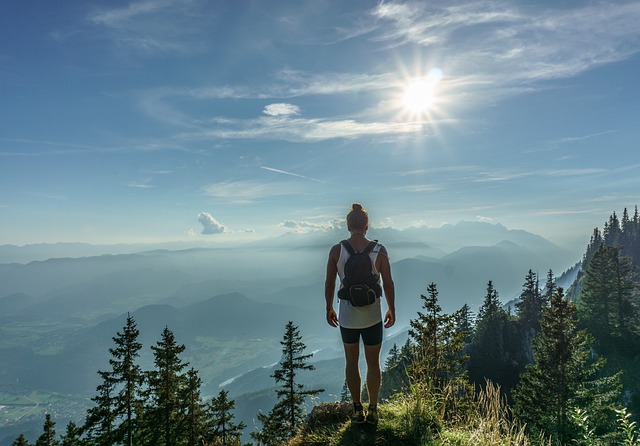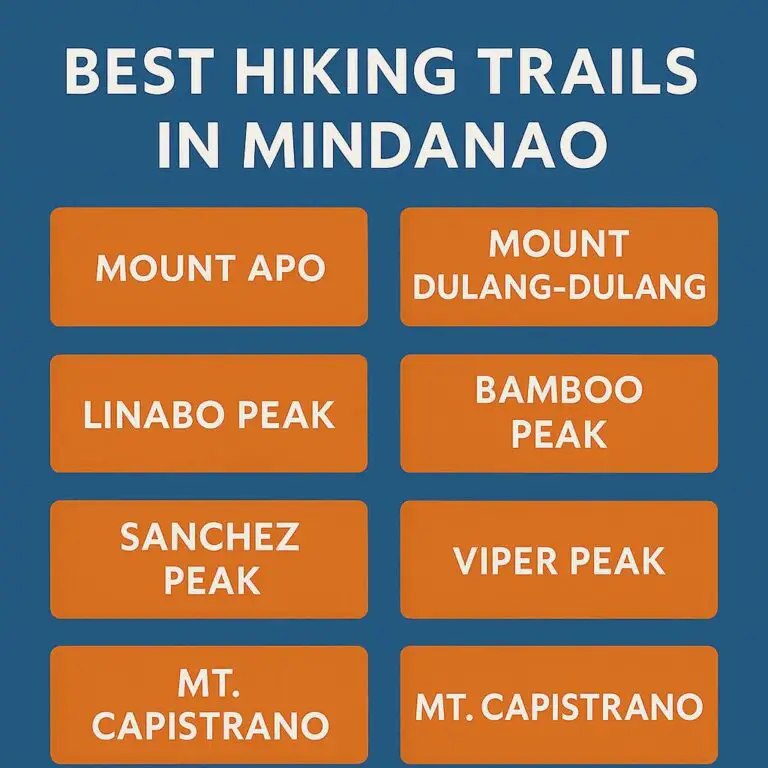Hiking is a popular outdoor activity that provides a great way to enjoy nature, get some exercise, and explore new places. But, have you ever wondered if hiking can also work your core muscles? Many hikers have experienced the burn in their abs and wonder if this is a sign of a good workout.
The answer is yes, hiking works your core muscles by engaging them in a functional way during uneven terrain, inclines, declines, and carrying a backpack. It can improve balance, stability, posture, and functional fitness while reducing the risk of injury.
In this post, I’ll explore the relationship between hiking and core strength to answer the question: “Does hiking work your core?” in great detail. I’ll discuss the physical demands of hiking, how they engage your core muscles, and the benefits of hiking for core strength. I’ll also provide tips for maximizing core engagement while hiking and highlight other physical and mental health benefits of this outdoor activity. So, let’s hit the trails and unleash our abs strength on the hiking trails!
What is the core?
Before diving into the relationship between hiking and core strength, it’s important to understand what the core is. The core refers to a group of muscles in the abdomen, lower back, and pelvis that works together to stabilize and support the spine and pelvis. These muscles include the rectus abdominis (the “six-pack” muscle), obliques, transverse abdominis, erector spinae, and hip muscles.
A strong core is essential for proper posture, balance, and stability in everyday activities, as well as during physical exercise. It also helps to prevent injury and lower back pain. While many people associate core strength with just having visible abs, a truly strong core involves all of the muscles in this area working together to provide support and stability.
How hiking engages your core?
Hiking is a physically demanding activity that engages a variety of muscle groups, including the core. The uneven terrain, inclines, and declines encountered while hiking require the core muscles to work together to maintain balance and stability. Additionally, carrying a backpack while hiking adds an extra challenge for the core muscles, as they must work harder to stabilize the body and distribute the weight evenly.
The specific core muscles used during hiking include the rectus abdominis, obliques, transverse abdominis, erector spinae, and hip muscles. These muscles work together to stabilize the spine, pelvis, and hips during movement. For example, the rectus abdominis and obliques help to control trunk flexion and rotation, while the transverse abdominis and erector spinae help to maintain a neutral spine and prevent excessive curvature.
Overall, hiking engages the core muscles in a functional way that is similar to everyday movements, such as lifting, carrying, and bending. This can help to improve core strength and stability, as well as overall physical performance.
Benefits of hiking for core strength
Hiking offers several benefits for core strength, which can translate into improved posture, balance, and stability during everyday activities and physical exercise. Some of the benefits of hiking for core strength include:
- Increased muscle activation: Hiking engages the core muscles in a way that is not possible with traditional ab exercises, such as sit-ups or crunches. The uneven terrain and natural movements required during hiking activate more muscles throughout the entire core, resulting in a more complete and functional workout.
- Improved balance and stability: The core muscles are essential for maintaining balance and stability during movement, especially on uneven terrain. Hiking challenges the core muscles to work together to stabilize the body, improving balance and reducing the risk of falls or injury.
- Enhanced posture: A strong core helps to maintain proper posture and alignment of the spine. Hiking engages the core muscles to support the spine and maintain a neutral position, which can help to alleviate back pain and improve overall posture.
- Reduced risk of injury: Hiking requires the core muscles to work together to stabilize the body during movement, reducing the risk of injury to the back, hips, and knees. A strong core can also help to prevent falls and other accidents while hiking.
- Functional fitness: Hiking engages the core muscles in a functional way that is similar to everyday movements, such as lifting, carrying, and bending. This can improve overall physical performance and make daily activities easier and more comfortable.
Hiking is a great way to improve core strength and enjoy the great outdoors at the same time. Incorporating hiking into a fitness routine can provide a fun and challenging workout that engages the core muscles in a functional way.
Tips for maximizing core engagement while hiking
To maximize core engagement while hiking, consider the following tips:
- Engage your core: Focus on engaging your core muscles while hiking by pulling your belly button towards your spine and maintaining a neutral spine position.
- Maintain good posture: Keep your shoulders back, chest open, and head aligned with your spine to avoid slouching or rounding forward. This will help engage your core muscles and maintain a strong, stable position while hiking.
- Take shorter steps: Taking shorter steps while hiking will engage your core muscles more than long strides, as your body will need to work harder to maintain balance and stability.
- Vary your terrain: Hiking on different types of terrain, such as hills, rocks, and uneven trails, will challenge your core muscles in different ways and help improve overall core strength.
- Carry a backpack: Carrying a backpack while hiking adds an extra challenge for the core muscles, as they must work harder to stabilize the body and distribute the weight evenly.
- Incorporate balance exercises: Practicing balance exercises, such as standing on one leg or walking on a narrow beam, can help improve balance and stability while hiking.
- Stretch before and after: Stretching before and after hiking can help prevent muscle soreness and tightness, which can hinder core engagement during the hike.
Other benefits of hiking
In addition to the core strength benefits, hiking offers several other physical and mental health benefits, including:
- Cardiovascular health: Hiking is a form of aerobic exercise that gets the heart pumping and improves cardiovascular health. Regular hiking can lower the risk of heart disease, stroke, and high blood pressure.
- Reduced stress and anxiety: Being in nature and getting fresh air and exercise can help reduce stress and anxiety levels. Hiking provides a natural way to unwind and clear your mind.
- Improved mood: Physical activity releases endorphins, which can boost mood and improve mental health. Hiking can be a great way to improve mood and overall well-being.
- Increased vitamin D: Spending time in the sun while hiking can help the body produce vitamin D, which is essential for bone health and immune function.
- Better sleep: Regular exercise, including hiking, can help improve sleep quality and duration.
- Social connection: Hiking with others can provide a sense of community and social connection. It can also be a great way to bond with friends and family.
Overall, hiking offers numerous physical and mental health benefits that can improve quality of life. Whether you’re a seasoned hiker or just starting out, getting outside and exploring nature can provide a fun and rewarding way to improve overall health and well-being.
Conclusion
In conclusion, hiking is an excellent way to work your core muscles in a functional way that can improve overall strength, stability, balance, and posture. The uneven terrain, inclines, declines, and carrying a backpack challenge the core muscles to work together to maintain balance and stability.
By focusing on engaging your core, maintaining good posture, taking shorter steps, varying your terrain, carrying a backpack, incorporating balance exercises, and stretching before and after hiking, you can maximize core engagement and enjoy the numerous physical and mental health benefits of this outdoor activity. So, hit the trails and unleash your abs strength on the hiking trails today!




